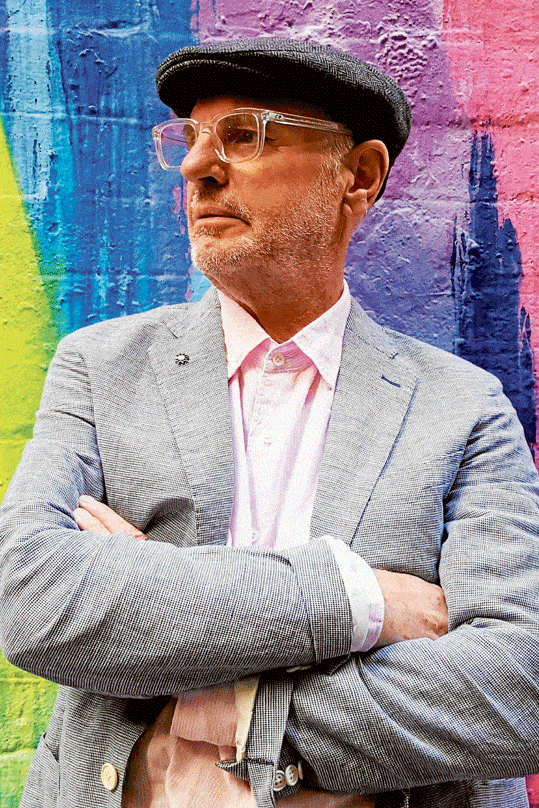 In his Easter Sunday homily, Archbishop Anthony Fisher OP spoke about the ‘secular sacrament of euthanasia.’ His phrasing was profound and poignant, because it highlighted that even those with a militantly secular outlook on life still seek a certain sacramentality around important moments, including death. How right the Archbishop was became clear just a few days after he preached that homily, in an op-ed that suicide advocate Philip Nitschke penned for Huffington Post.
In his Easter Sunday homily, Archbishop Anthony Fisher OP spoke about the ‘secular sacrament of euthanasia.’ His phrasing was profound and poignant, because it highlighted that even those with a militantly secular outlook on life still seek a certain sacramentality around important moments, including death. How right the Archbishop was became clear just a few days after he preached that homily, in an op-ed that suicide advocate Philip Nitschke penned for Huffington Post.
In the op-ed, Nitschke explained the reason he invented the Sarco suicide machine. For those unfamiliar with the Sarco, it is a death-tube of sorts unveiled about 5 months ago in Toronto, Canada. A person wanting to take their own life would download a copy of the Sarco model online (where Nitschke has promised it will be freely available), create the machine using a 3D printer, and purchase a few litres of liquid nitrogen to hook up to the machine. They would hop inside, enter a four-digit code to confirm that they want to die, and the Sarco would start releasing the liquid nitrogen that had been connected to the machine. As the liquid nitrogen fills the death tube, the oxygen levels decrease. The slowly reducing oxygen levels cause the person inside to experience a sensation similar to drunkenness before drifting off to a sleep from which they would never awake.
Nitschke describes the feeling as ‘euphoric.’
I don’t know if that’s true of a low oxygen death (and I hope never to find out), but for argument’s sake, let’s take him at his word that this is what happens in a low-oxygen environment. Does that really make for a “good death”?
According to Nitschke, it does. In the op-ed, he reminds the reader that ‘euthanasia’ is the Greek word for ‘good death,’ and advocates such a death – potentially using his death tube – for any rational adult over the age of 50. He claims as a human right not simply death with dignity (as many other euthanasia advocates do), but death with excitement:
“I began to envision a machine, device, invention, thing ― I’m searching for terminology here that is not yet in our vocabulary ― that might elevate the spirit when the end is nigh,” he writes. “Someone’s last day on Earth is special. Is there any reason why their feeling shouldn’t be measured in the positive, rather than in degrees of miserable-ness, pain and mental anguish?”
He puts a good spin on this version of a ‘good death,’ to be sure, but the practicalities of such a device point to something a little less comforting because it’s a necessarily isolated death. You can’t simultaneously be in a limited oxygen environment and be surrounded by family and friends. In Nitschke’s death tube, a person decides between a transparent or opaque tube; meaning they can choose to die with friends and relatives watching from behind a piece of perspex, or otherwise have those same family and friends receive a notification when a pulse is no longer detectable that it is “safe” to open the death tube. Neither sounds like a ‘good death,’ either for the person wanting to die or their loved ones. It sounds about as much fun as someone burying themselves alive!
I feel sorry for Nitschke and others who must search to find meaning and even joy in death. Imagine devoting your medical knowledge to coming up with means and machines that will numb the awareness and experience of death in order to make it something with which you can cope, or to which you can look forward. It’s terribly sad.
Without the gift of faith, looking forward to death would be crazy. Without the gift of faith, death would indeed be the end. Without the gift of faith, I suppose – ironically – that you would want your death to be as ‘memorable’ as possible.
The Catholic version of a ‘good death’ is much more appealing – and lasting – than Nitschke’s drunken death tube. We have a long and beautiful tradition of praying for a ‘good’ or ‘happy’ death for ourselves and those we love. This is not necessarily a death free of pain or other types of suffering, but one in which we are encouraged to prepare well to meet the Lord. As people of faith, we know that death is something of which we should not be afraid, and that a ‘good death’ is one where we are consoled by, and can trust in, Christ’s redemptive love. If we pray for a good death, and avail ourselves of the sacraments of healing as we near the end, then death will be something to which we can look forward. It will be the ‘euphoric’ end that Nitschke so desperately seeks.
